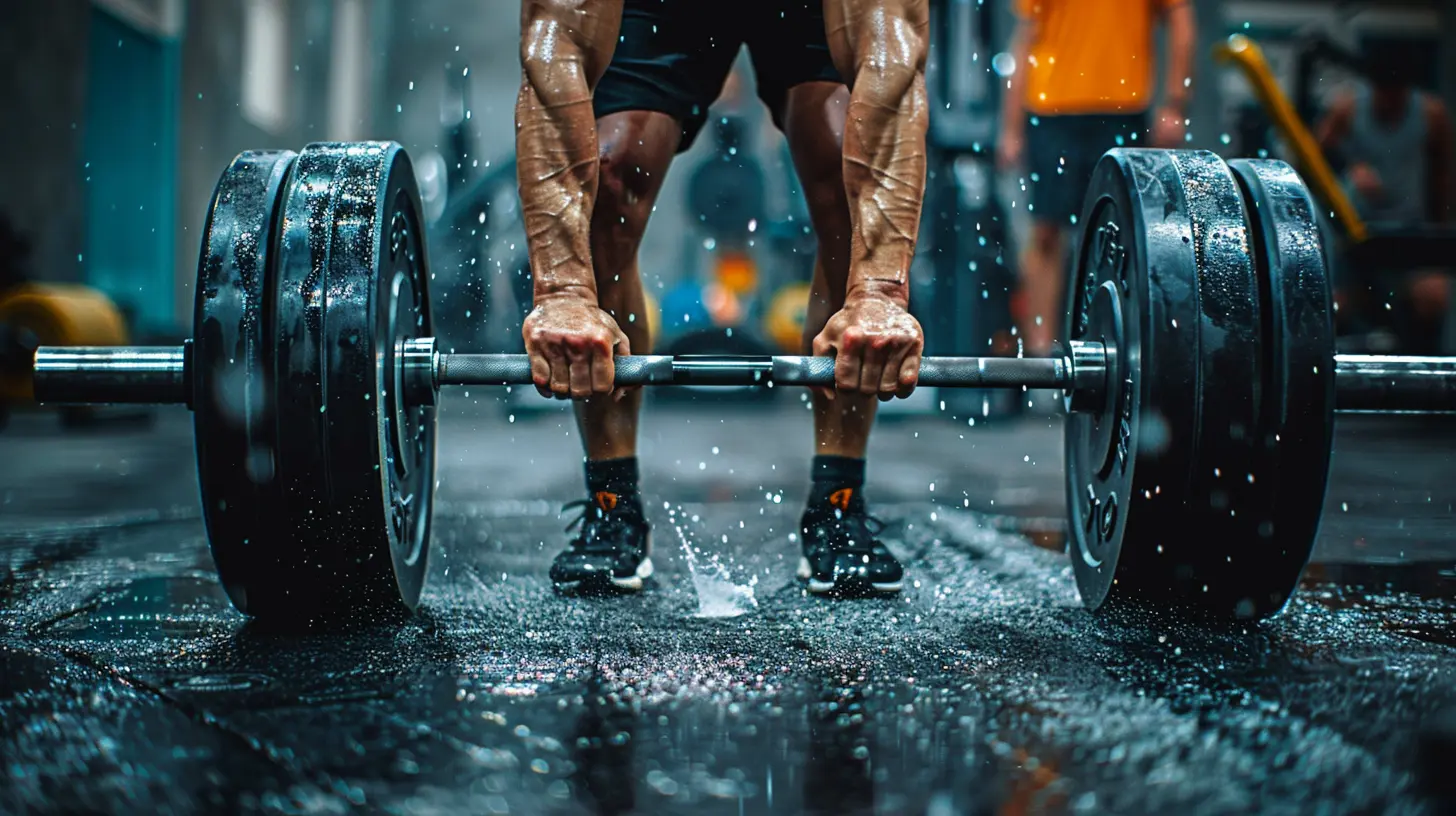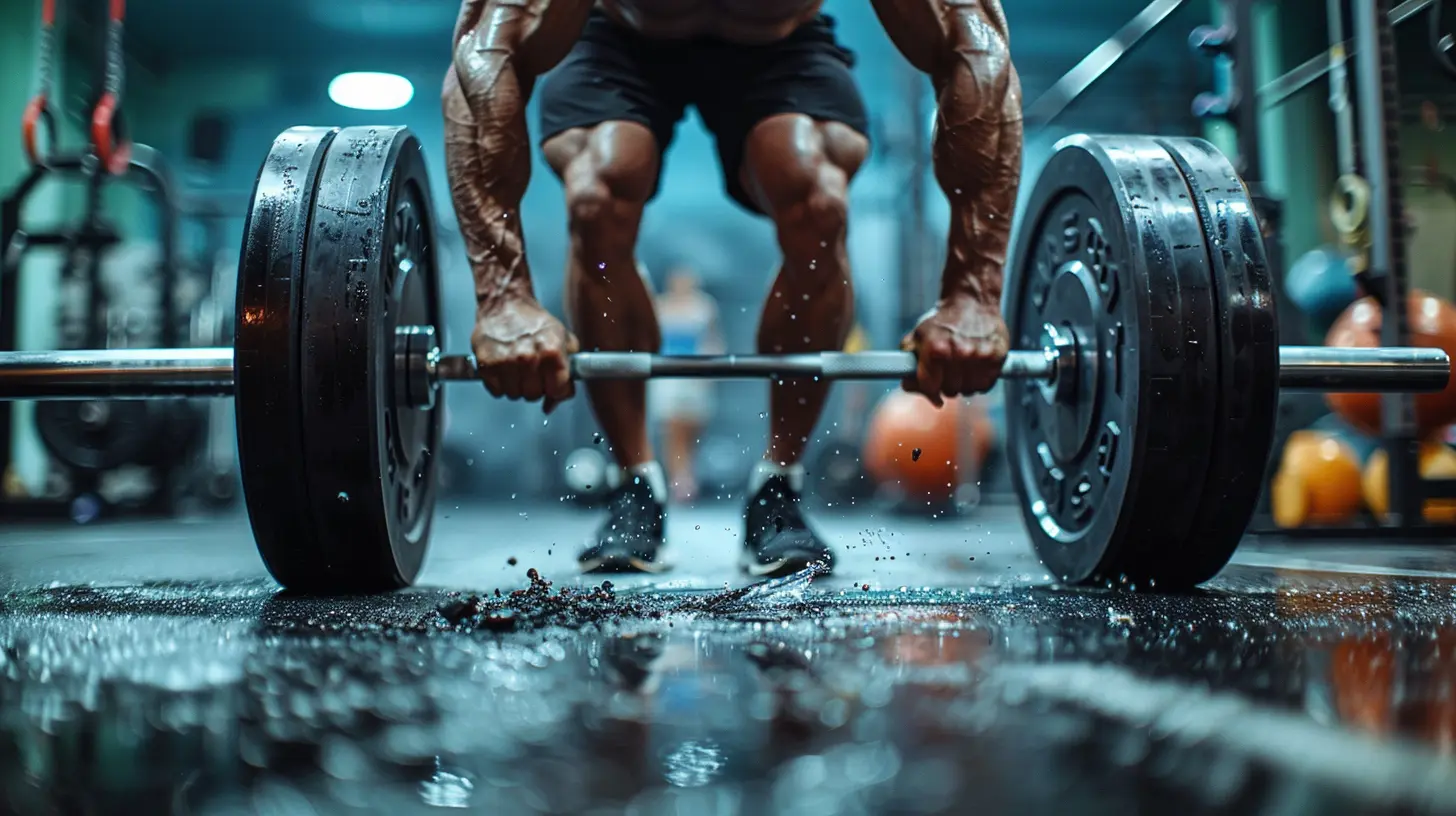Mastering Compound Lifts: The Key to Strength and Muscle Growth
19 May 2025
When it comes to building muscle and increasing strength, nothing beats compound lifts. These multi-joint movements recruit multiple muscle groups, helping you maximize gains in the most efficient way possible. Whether you're a beginner or an experienced lifter, mastering these lifts is crucial for long-term progress.
But what exactly makes compound lifts so effective? And how can you ensure you're doing them correctly? Let's break it all down in this guide to mastering compound lifts for strength and muscle growth.

What Are Compound Lifts?
Compound lifts are exercises that engage multiple muscle groups and joints simultaneously. Unlike isolation exercises—like bicep curls or leg extensions—that focus on a single muscle, compound lifts work several areas at once.Think of it like this: if your workout was a sports team, compound lifts would be the star players, doing the heavy lifting (literally). Meanwhile, isolation exercises play a supporting role, helping you refine certain muscle groups.
Why Are Compound Lifts So Important?
There are a few key reasons compound lifts should be the foundation of your training:- More Muscle Activation – Since these exercises recruit multiple muscle groups, they provide a bigger bang for your buck.
- Strength Gains – Lifting heavy weight with compound movements translates to greater overall strength.
- Efficiency – You can hit several muscle groups in fewer exercises, saving time in the gym.
- Improved Functional Fitness – These movements mimic real-world activities, making you stronger in everyday tasks.
- Boosted Hormonal Response – Compound lifts stimulate greater testosterone and growth hormone production, which are essential for muscle growth.
Now that you know why compound lifts are crucial, let’s dive into the most effective ones you should focus on.

The Five Essential Compound Lifts
If you want to build serious strength and muscle, these five lifts should be at the core of your routine.1. Squat (The King of All Exercises)
When it comes to lower body strength and overall athleticism, nothing beats the squat. This exercise targets your quads, hamstrings, glutes, core, and even your lower back.How to Perform a Squat Correctly:
- Stand with your feet shoulder-width apart.
- Keep your chest up and engage your core.
- Lower your body by bending your knees and pushing your hips back.
- Go as deep as you can while maintaining good form.
- Drive through your heels to return to the starting position.
⚠ Common Mistakes:
- Letting your knees cave in.
- Rounding your lower back.
- Lifting your heels off the ground.
2. Deadlift (The Ultimate Strength Builder)
The deadlift is the ultimate test of pure strength. It primarily targets your posterior chain—hamstrings, glutes, and lower back—while also engaging your core, grip, and shoulders.How to Perform a Deadlift Correctly:
- Stand with your feet hip-width apart, barbell over the middle of your feet.
- Grip the bar just outside your knees.
- Keep your back straight, chest up, and engage your core.
- Drive through your heels, pulling the bar up as you straighten your hips and knees.
- Lower the bar in a controlled motion back to the ground.
⚠ Common Mistakes:
- Rounding your back.
- Using too much arm strength instead of engaging your legs.
- Jerking the weight off the ground.
3. Bench Press (The Upper Body Mass Builder)
The bench press is a staple for upper body strength, targeting your chest, shoulders, and triceps.How to Perform a Bench Press Correctly:
- Lie flat on a bench, feet planted firmly on the ground.
- Grip the bar slightly wider than shoulder-width.
- Lower the bar to your chest, keeping your elbows at about a 45-degree angle.
- Press the bar back up, ensuring a controlled movement throughout.
⚠ Common Mistakes:
- Bouncing the bar off the chest.
- Arching the back excessively.
- Flaring the elbows too wide.
4. Overhead Press (The Shoulder Strengthener)
The overhead press is an essential movement for building strong and well-rounded shoulders. It also engages your core, helping improve overall stability.How to Perform an Overhead Press Correctly:
- Stand with your feet shoulder-width apart.
- Grip the barbell just outside shoulder-width.
- Press the bar overhead in a straight line.
- Lock out your arms at the top while keeping a tight core.
- Lower the bar back down to shoulder height with control.
⚠ Common Mistakes:
- Leaning back too much, putting pressure on the lower back.
- Using too much leg drive (unless you're doing a push press).
- Failing to lock out at the top.
5. Pull-Ups (The Ultimate Back Builder)
Pull-ups are a bodyweight compound movement that targets your lats, biceps, and upper back. Mastering this movement can be a game-changer for upper body strength.How to Perform a Pull-Up Correctly:
- Grab a bar with an overhand grip, hands slightly wider than shoulder-width apart.
- Hang with your arms fully extended.
- Pull your body up by engaging your back and squeezing your shoulder blades together.
- Get your chin over the bar, then lower yourself back down with control.
⚠ Common Mistakes:
- Using too much momentum (kipping pull-ups).
- Not going through the full range of motion.
- Letting the shoulders shrug at the top.

How to Incorporate Compound Lifts Into Your Routine
Now that we've covered the essentials, how should you structure your workouts? Here’s a simple approach:Beginner Routine (Full-Body Workout – 3 Days a Week)
- Squat – 3x8- Bench Press – 3x8
- Deadlift – 3x5
- Overhead Press – 3x8
- Pull-Ups – 3x10
Intermediate Routine (Upper/Lower Split – 4 Days a Week)
Day 1 – Upper Body- Bench Press – 4x6
- Overhead Press – 3x8
- Pull-Ups – 4x10
- Accessory work (biceps & triceps)
Day 2 – Lower Body
- Squat – 4x6
- Deadlift – 3x5
- Lunges – 3x10 (each leg)
- Core work
And repeat for the next two days with some variation in volume and intensity.

Tips for Mastering Compound Lifts
Want to get the most out of your lifting? Here are some key pointers:- Prioritize Form Over Weight – Lifting heavy is great, but not at the expense of good form.
- Progressive Overload – Gradually increase weight over time to keep challenging your muscles.
- Rest and Recover – Your body needs time to grow, so don’t skimp on sleep and recovery.
- Fuel Your Body – Proper nutrition is key for muscle growth and overall performance.
- Train Consistently – Gains don’t happen overnight. Stay committed and trust the process.
Final Thoughts
Mastering compound lifts is the fastest way to build strength, pack on muscle, and improve overall athleticism. By focusing on these essential movements and training consistently, you'll set yourself up for long-term success.Now, it’s time to hit the gym and put in the work—because strength isn’t given, it’s earned!
all images in this post were generated using AI tools
Category:
Gym TrainingAuthor:

Frankie Bailey
Discussion
rate this article
4 comments
Phaedra Hall
Great article! Compound lifts truly are the foundation of strength training. Excited to apply these tips for my own muscle growth journey! Keep it up!
May 23, 2025 at 4:22 AM

Frankie Bailey
Thank you! I'm glad you found it helpful—best of luck on your muscle growth journey!
Renee McCallum
This article sparks my curiosity! I'm eager to learn how mastering compound lifts can transform not just strength, but also overall fitness. Which compound lift do you think offers the most benefits for muscle growth? Looking forward to your insights!
May 22, 2025 at 3:48 AM

Frankie Bailey
Thank you for your enthusiasm! While all compound lifts offer great benefits, the squat is often considered the most effective for muscle growth due to its ability to engage multiple muscle groups simultaneously. Happy lifting!
Rhett Banks
Lift heavy, eat cake—repeat for gains!
May 21, 2025 at 10:31 AM

Frankie Bailey
Absolutely! Balancing hard work in the gym with some indulgence can keep motivation high. Just remember, consistency in training and nutrition is crucial for real gains!
Taylor McAdams
Great article! Compound lifts are indeed essential for building strength and muscle. Focusing on proper form and gradually increasing weight can maximize results effectively. Keep pushing!
May 19, 2025 at 3:18 AM

Frankie Bailey
Thank you! I'm glad you found it valuable. Proper form and progression are crucial for maximizing results with compound lifts. Keep lifting!



